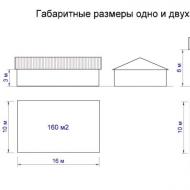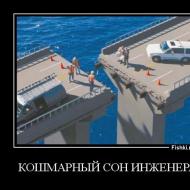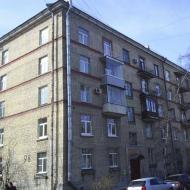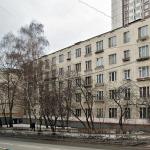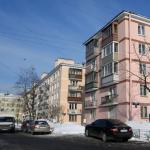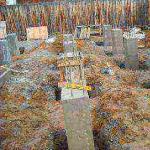
The Frankfurt Stock Exchange is one of the largest stock exchanges in the world. Frankfurt Stock Exchange Frankfurt Stock Exchange
Its value has increased after World War II in the late 40s, when the trading platform took the leading position in Germany. Since 1993, the Frankfurt Stock Exchange is running "Deutsche Boerse Group".
The total capitalization of companies, and their exchange is presented more than a thousand, is about two trillion dollars. Turnover financial means The Frankfurt Stock Exchange is almost 90% of the trade turnover of all European stock exchanges. In 2017, the decision of the European Commission was blocked by the merger of this shopping ground With the London Exchange, which prevented the monopolization of the market.
Stock indexes
The main stock index of the Frankfurt Exchange is denoted by the DAX abbreviation, its oscillations are largely characterized by the state of the German economy. This indicator is calculated on the basis of current stock quotes of thirty largest German companies.
In addition to the main index, its derivatives are used, they are calculated on the basis of the value of the shares of the following categories:
- Tecdax. 30 companies from high-tech industries whose assets are distinguished by high liquidity;
- MDAX. 50 largest corporations that have not entered TECDAX. This group includes world-famous brands PUMA SE, Metro AG and Hugo Boss AG.
- SDAX. Companies in the rating of positions starting from 81 to 130, Bauer AG is the most famous representative of this group.
- HDAX is a general index, calculated on the basis of data on the quotations of shares of firms from various sectors of the economy.
CDAX consolidated index reflects the stability of the stock exchange, the basis for its calculation is the data of more than three hundred issuers, and their number includes the largest automakers, financial and credit institutionsAs well as many other companies.
The Xetra trading system
The operation of the Exchange provides a complex software and hardware complex. The trading system is called Xetra and for the first time it was launched in 1997. With this system, more than two dozen European and Asian trading platforms are integrated, including the Osmerman, and Shanghai.
The XETRA system allows you to perform operations for buying and selling derivatives, stocks, valuable papers. Subsystem Cash Market is used in the cash market money, and Xetra-Gold - to acquire and implement banking metals. In total, there are more than 2,500 tools in the complex, including traditional - ETF, investment funds Both others, as well as rarely used ETNC (valuable debt paper) and ETSC (Product Index).
Basic players
The described trading platform takes place and selling securities of a large number of companies. The main players of the Frankfurt Exchange are divided into three categories:
- banks;
- official term manels;
- registered traders.
Each of them performs its own functions. Banks form a priority price and provide the main shaft of operations. Macners accept applications from their customers and fulfill them, following the instructions obtained. Free traders do not have significant speculative potential, although their total quantity they cannot act consolidated.
It is one of the largest in the world and largest in Germany. To date, the operator of this trading platform is Deutsche Boerse Group AG. It is believed that the Frankfurt Stock Exchange was founded in 1585, when the merchants were adopted by the only exchange rates in Frankfurt am Main. At that time, the latter was the largest shopping center of Europe. But the leading positions of the Frankfurt Stock Exchange in Germany took only in 1949.
To date, the trading platform in Frankfurt is not without reason, one of the most innovative exchange in the world is considered one of the most innovative stock exchanges. Supports contact with investors around the world, while their number increases every day. Interestingly, until 2000, the majority of the participants of the Exchange were German citizenship. At the moment there are so many investors from England, France, Switzerland, the United States and many other countries.
Frankfurt Stock Exchange. Benefits of the Stock Place
The main advantage is that the Frankfurt Stock Exchange offers the smallest value of the initial placement of shares compared to other sites. For companies wishing to enter international capital markets, the Frankfurt Stock Exchange is the most optimal option, in terms of temporary and financial expenses. The trading platform is put forward quite soft requirements of listing, and they are the same absolutely for all participants, regardless of capitalization and trade history. But at the same time, the transparency of the company is necessary.
Trading through the Frankfurt Stock Exchange is possible immediately in three markets:
- the official market on which you can work with government bonds and shares of large companies;
- adjustable market - trade in securities of companies with less capitalization;
- outdoor Market - Work with shares of new and small companies.
At the end of 2007, the daily trading volume on the stock exchange was about 1.915 trillion US dollars. Listing 866 companies consisted. Leading index, which is calculated by the Frankfurt Stock Exchange - DAX (Deutscher Aktienindex). It displays the weighted value of prices for shares of 30 largest German companies and by and large is the barometer of the economy of all Germany.
By numerous requests of traders.
Hello, friends! Today we will talk about one way to find out which positions are large speculators and investment funds. After all, as you know, the Forex market is moving money. Namely - big money. More precisely, speech will go About Cot Report Analysis (Commitments of Traders) provided by the CFTC Commission (US. Commodity Futures Trading Commission). From the material below you will learn: what is this reports when and where to take them, and most importantly - how they can help us in trade.
Reports Sot

From these reports, we can find out which major players on Forex now occupy the position. And, using this data, make more suspended decisions about their own entrances and transactions for analyzing the current trading situation in the market.
So, why do we need the movements of large players? The fact is that the market is moving money. And drive big money. Naturally, we are with a lot, say, 0.1 can not change anything. But large players: large traders, investment funds, banks, etc., pouring hundreds of millions of dollars to the market cause significant movements. And to go against such strength, often happens unreasonable. Therefore, we can use knowledge about what side of the market is "Berenyak".
How to find out the position of large players?

One way is the reports of the cells that U.S. CFTC.
U.S. CFTC is an organization that ensures that there is no offenses in trade in the futures market. And this organization reports all major players in the futures market. In turn, this commission is posting in free access reports called "Commitments of Traders". We can just go to the site and view these reports without any obstacles. This is free information in free access. Natural - these reports from the futures market. And the futures market is not all players in the foreign exchange market. But even from this data we can make quite significant conclusions.
How do we get access to these reports?

Non-Commercial is large speculators. That is, banks or investment funds. As well as individual personalities with large capital. Here you can see the number of long and short positions, as well as Spreads.
Spreads are opposite positions opened by the same player. For example, on the purchase and sale at the same time. Perhaps this is part of a difficult strategy, since futures are different expiration dates. Perhaps something else. This is not particularly interested in us. But these data are provided.
Commercial is data on hedgeram. Data on commercial representatives in the market, which are not trading in order to somehow speculatively earn money, but in their own interests. That is some big companies.
For example, some company is unprofitable for renting prices for any raw material, which is required for the production of their product. And they, accordingly, buy raw materials or currency in advance so that in case the price increases, have a delivery for its product and not overpay. Simply put, commercial players do not play the market in order to make a profit from price change, but act in their own interests.
In order to get into this category, you need to submit a special application to the Commission on Futures Markets. And only after that you will be able to accept. But recently, not only large under this category are suitable for this category. commercial organizations, but also, for example, swap-dealers in banks.
Total - the sum of the long and short positions of large players and commercial hedgers. For each position there is a division on Long and Short, that is, the number of long and short. This report has a lot of information that we do not need. There are various products and goods. We are interested in currency, so you need to scroll down the report down to currencies.
Also, we have CHANGES FROM data.


If it is easier to speak, then open interest is the amount of money in the market.
How to apply data from the COT report?

In principle, you can study the data directly from the report, but on our site there is a tool representing figures in the form of indicators for each individual currency pair.
He is located on the link:

Figures from the Bulletin of the CFTC Commission are separated in three graphs located under the currency pair. Select a specific tool in the settings windows located above the schedule.

The number of pairs (8 positions) corresponds to the list founded Futures CME exchange. The remaining two settings windows are technical indicators and options for presenting the type of quotes: candles, bars, etc.
Cot tools are made on the TradingView service, which allows you to use standard settings for graphs or delete part of the indicators.

Commercial players, like dealers acting in the role of Market Meikers and opening positions, opposite to customers, are against the trend. And, as a rule, they begin some active actions against the trend. And often a little earlier of the moment as the trend manifests itself.
Factors that are not available ordinary people, but are known to Hegers, encourage them to take any actions in advance. For example, buying futures for a pound. And, thus, secure your business from financial risks. Here is a good visible example on the Canadian dollar.

We had a long trend down. At this point, the hegers (commercials) were in the overbought zone of the cell index. Almost all the time while the trend was down. And as soon as the trend began to grow up, respectively, the honeycomb index for hedgers (commercials) began to crawl down. They are against the trend in their own interests. And begin to go against the trend often in advance.

On our example with a pound you can see that now there is a growing position of Hedgers. This means that it is necessary to expect a pound movement down. As for large traders or speculators, then, as a rule, they go along with the market, as they make up its considerable part.
How to analyze all this?

It is worth paying attention to the situation as a whole. That is, watching hedges (commercials) and large speculators (LARGE Speculations), as well as for small speculators. First of all, I want to warn you that the use of the cell index, as a separate system, is incorrect.
If we proceed only from the reports of the cell, then you can hardly trade profitably, based solely on this information. It happens that the signals are false, and you will have to trade on weekly charts. To recognize this, it takes very non-real preparation and experience. Plus time factor. You will have to keep the position for a very long time and use huge stop loss.
Therefore, I advise you to use COT reports as a filter to your system. That is, to assess the situation with the help of technical analysis, and check the transactions and the general state of the market on the reports of the cell. At the same time you need to use all the information, not only some separate group of traders. And also pay attention to open interest, that is, how much is heated by the market.
Open interest is at the bottom of the graph in the form of a histogram. I remind you that OpenInterest is the amount of money in the market. Let's look at the example what happened in the market. I draw your attention to the points when open interest is in critical positions. That is, either it is very low or high.

How high and how low we can determine, just looking, in general, on the schedule. At these points, we pay attention to what the remaining groups of speculators do. Namely large hedgers (commercials) and small players (Small Speculations).

As can be seen from the picture above, low open interest is similar to Flat, the absence of liquidity does not allow any of the participants recorded in COT, to gain large positions by euros.
The schedule shows that the situation of low volumes on futures and options was "calm before the storm." Referendum Brexitis, elections in the United States, Fed's policies reversal caused strong movements for forex, which was expressed in active trends and liquidity growth.
Critically a high open interest means that the market is overheated. Hedgelov positions (commercials) at the bottom. Large Speculations and Small Traders (Small Speculations) at the Pike Shopping. What can happen here? Small speculators can be easily used for a knife. Large speculators are likely to fix profits by selling their position with small speculators that will willingly buy them. Money is too much, the potential for growth, at the moment, has been exhausted.

The fall of the euro does not cause himself to wait: small speculators (small speculates), as always, did not guessed the movement, major players and hedgers are "exchanged" volumes, the indicator curves go to each other, part of the position goes to the cache, which is reflected in the fall of open interest.
Hedger and speculators (Large Speculations) and speculators can also be used as overbought or oversold signals. The minimum and maximum values \u200b\u200bof the types of futures often coincide with an abnormal take-off or discharge of open interest.
As can be seen from the figure below, they accurately predict fractures (reversals) of the course of the currency pair.

The main thing is to remember the rule: large speculators (Large Speculations) always build up long positions along the trend of the pair course. Headers always come against the trend. Small traders are almost always sacrifices - they are often mistaken, but the indicator curve should bargain on the system against the crowd, so sometimes they can be quite useful. That's all.
Conclusion

Do not forget to use the Sot reports only as an additional indicator of your system, which can be checked once a week before opening the market. Do not trade exclusively on the reports of the cell, since it is, to put it mildly, very hard and unreliable.
Thanks for attention. To new meetings!
The Frankfurt Stock Exchange is one of the oldest stock exchanges in the world, as well as one of the main exchange rates of mainland Europe. Frankfurt. Stock Exchange. Included in the Deutche Borse Group holding group, which also belongs to several dozen financial and banking sector companies. The Group provides a full range of exchange services, which provides 70% of the stock activities of Germany - the largest economy of the European Union.
History of the Frankfurt Stock Exchange
The beginning of the FSE Stock Exchange is attributed to 1585, when merchants western Europe They met in the most developed trading site at that time - in the city of Frankfurt. It all started with ordinary fairs that merchants came from all parts of Europe.
thousand different issuers
place among the stock exchanges of the world
all financial transactions in Germany
Some historians mention the first sources of the Frankfurt Exchange even earlier - for 1150. It was then, in their opinion, the first product fair occurred on the Rhine, which laid the beginning of the history of the Exchange. At first, the fairs were held once a year, but at 1330 Ludwig Bavarian, watching the popularity and high demand of the trading platform, decided to introduce an additional spring fair, which became an excellent news for both agricultural producers and buyers from Western Europe. In turn, merchants from the western part brought the fish to the Fair, which also increased the income of the platform.
Want to earn at the promotions of super-companies, such as Google, Apple, Microsoft, Facebook? Invest in them with the most reliable stock broker.
By the middle of the sixteenth century, the trading platform in Frankfurt has already become one of the largest and most popular traders and buyers from Holland and France, which were subjected to persecution from His government due to Protestantism.
 The period that is considered more officially as the beginning of the functioning of the Frankfurt Exchange, namely, 1585, became the date of entering uniform exchange rates. This was caused by too much merchants from different regions and, according to a huge number of different monetary units. Buyers and sellers themselves began to be confused in the course difference, as well as fraudsters often used this factor for the purpose of profit. Then the bidders decided to establish a single exchange rate. Against the background of such regulaments on the stock exchange immediately appeared traders of bills and exchange rate speculators. The first official leaf of exchange differences for currency exchange was adopted in 1625. The list included 12 currencies with dates of closing transactions of prisoners at the fair.
The period that is considered more officially as the beginning of the functioning of the Frankfurt Exchange, namely, 1585, became the date of entering uniform exchange rates. This was caused by too much merchants from different regions and, according to a huge number of different monetary units. Buyers and sellers themselves began to be confused in the course difference, as well as fraudsters often used this factor for the purpose of profit. Then the bidders decided to establish a single exchange rate. Against the background of such regulaments on the stock exchange immediately appeared traders of bills and exchange rate speculators. The first official leaf of exchange differences for currency exchange was adopted in 1625. The list included 12 currencies with dates of closing transactions of prisoners at the fair.
NameBurse (BoerseBORSE) was fixed behind all stock exchanges of continental Europe from 1605 years. Historians assign this name merit merit van der Burs from Brugge. Also, some believe that the alley had a similar name, on which the merchants began to gather for the first time.
In 1666, a set of rules for the behavior of exchange brokers appeared on the Frankfurt Stock Exchange, and at the end of this century, Frankfurt's exchanges were already able to acquire their own GROBER BRAUNFELS building for trading activities. The first treasury bonds of the German Empire were posted on the Frankfurt Stock Exchange in 1779.
The end of the First World War brought the strongest to Germany economic crisis And in 1929, almost all shares of companies fell in price of up to behold kopecks. During World War II, the Frankfurt Exchange functioned quite actively and gained momentum, but with the fall of the authority of the Third Reich received a significant outflow of capital and closed for 6 months.
In 1953, it becomes again the beginning of the era of the dawn of the Frankfurt Stock Exchange and at the site begin to be held active trading to the US currency, Canada, Switzerland and other developed countries of the world. By 1957, the stock exchange restores the destroyed trading room and continues full functioning.
In 1969 in the building trade exchange FSE installed a computer system for conducting trade operations Boga and this is two years earlier than the installation of a similar system on stock Exchange NASDAQ. in USA. The Boga system provided the operational transmission of quotes by telecis.

At the beginning of the 90s, the Frankfurt Exchange became the "birthplace of new markets" - European companies of the technological sector and novice web companies placed their shares on the Frankfurt site. Also in 1993, FSE entered the DEUTCHE BORSE AG Holding.
In the early 2000, the leadership of the Frankfurt Stock Exchange held several meetings with the owners of the London Stock Exchange. The subject of conversations were the merger of the two largest European sites, which could give rise to one of the largest stock markets In terms of However, the transaction has not fully took place in connection with the fact that one of the initiators is Werner Zafert (Deutche Borse AG general director) resigned. The stock exchanges managed to achieve only a partial merger with the formation of an interethnic trading platform International Exchange, which was headed by the Frankfurt leadership.
Later, the owners of the German exchange platform began a discussion on the merger with another exchange - the French stock exchange EUROEXT. But the deal was failed to take place, since EUROEXT bought the New York Stock nYSE Exchange For 9.96 billion dollars. Because of such a series of failures, the FSE leadership decided to quickly acquire the Six Swiss Exchange Swiss Holding. Significant increase in capitalization data did not bring these transactions, but it was allowed to export the Xetra trading system to abroad, which was created by the Germans in 1997.
The Xetra trading system is still great popularity and demand. Not only the Frankfurt stock exchange is connected to it, but also all divisions of Deutche Borse AG, the network of Swiss stock exchanges, Shanghai Exchange and Eurex. The system is characterized by high speed and reliability, as well as the simplest user interface, which allows transactions with shares, derivatives, as well as in market conditions cash currency and precious metals (CASH MARKET and XETRA GOLD).
Modern FSE
The modern Frankfurt Stock Exchange is the leading European platform for transactions with shares, bonds, derivatives and synthetic financial inglacial instruments. Listing FSE includes more than 1000 companies with a total capitalization of almost 2 trillion dollars. The Borse AG group includes not only stock markets, but also banking institutions, a clearing company, official manels and trading centers.
Exchange operates from 9:00 to 20: 00. A wide range of tools not only of European origin is available, but also the financial assets of Russia, Asia and America.
The stock exchange is calculated by several stock indices, two of which are of great popularity throughout the world: DAX and EUROSTOXX 50.
 DAX will be calculated since 1988 and is considered an index. economic activity Germany. The index indicator includes 30 largest countries of the country whose shares are addressed on the Frankfurt Stock Exchange. During its existence, the DAX index has grown 7 times.
DAX will be calculated since 1988 and is considered an index. economic activity Germany. The index indicator includes 30 largest countries of the country whose shares are addressed on the Frankfurt Stock Exchange. During its existence, the DAX index has grown 7 times.
Euro Stoxx 50. - The basic indicator of the entire EU economy, which is calculated immediately in the 5th currencies.
SAME famous companiesAvailable for trade in the FSE market, are Volkswagen Group, Siemens, Man, Henkel, E.on, Deutsche Lufthansa, Deutsche Bank, Daimler, Commerzbank, BMW, Bayer, Basf, Adidas and others.
To date, the Frankfurt Stock Exchange provides 90% of all financial transactions in Germany and controls about 30% of the European market.
Being created in 1585, the playground (according to the owners), leads the story since the XI century, when merchants from the West met in fairs with Siberia pagans.
Today it is among the ten largest trading platforms in Europe and acts as unconditional leader of the continental part. Capitalization of its participants reaches 1.9 trillion. US dollars, according to the total turnover on the stock exchange accounts for up to 90% of the total market movement. Exchange enters Conglomerate Deutsche Borse. and has close connections with Six Swiss Exchange.
The Germans are energized Frankfurt Exchange By the fall of 1150, when the first product fair was held on the Rhine. This information is allegedly fixed in written sources. In 1330, Ludwig Bavarian expanded the impact of the trading platform, introducing a spring fair, which was on the hand of the merps of the fur and residents of Western Europe - they were always rich in fish.
By the beginning of the XVI century, the city, which was in the center of Europe, became so rich that Martin Luther called him " silver and Golden Die Herman Empire " A huge number of French and Dutch merchants, who were subjected to persecons in their homeland, came here to the Motherland due to the commitment of Protestantism. In the meantime, each region of feudal Europe had its own currency, even merchants were confused in cross-courses.
In 1585, they met at the traditional fair and established uniform exchange rates in order to prevent fraud. And after 20 years, in 1605, words appeared Burs. or Börsewho subsequently be called all the stock exchanges of continental Europe.
Historians are convinced that it went on behalf of the merchant from Brugge Vana der Burre, and the word "Burs" has a second meaning - a bag, wallet, sum.
The first sheet with foreign currency quotes was dated 1625, it has already found 12 names of currencies with the date of payment of goods obtained at the fair. In 1666, the rules of the behavior of the brokers appear, and in 1694 they move to the Großer Braunfels own building. In 1779, state bonds of Emperor Germany were posted on the stock exchange.
After the I World War, the shares of companies appealing on the stock exchange, fell in price to the level of garbage, and in 1929, simultaneously with the United States, began financial crisiscalled "Black Friday". All II World War Playground worked, gaining momentum, but after falling III Reich was closed for half a year. In 1953, bidding with US dollars, Canada, Swiss
franks and currency in Europe. In 1957, the Restored Trading Hall of the Exchange opens. BUT, attention, already in 1969 (!), Two years before, a computer system is installed in the Ramboff building. Boga.allowed to exchange quotes through a telex. In 1993, the Frankfurt stock becomes the exchange of new markets (analogous to the dotcomms) and enters the group Deutsche Börse AG.
Interesting thing. In 2002-2004, the owners of the Frankfurt trading platform conducted negotiations on the merger with, which would make a group of third in the world in terms of capitalization. After the epic failure ( general Director of Deutsche Börse AG Werner Zafer, I had to resign), the Germans began negotiations with French with a 3 trillion capitalization. US dollars.
At the beginning, the parties could not agree on the price, then the game was connected to the game, which bought Europeans for 9.96 billion dollars. USA with the right to share shares. The defeat, the Germans hurried and bought a Conglomerate of the Swiss Exchange Six Swiss Exchange. It practically did not increase financial revolutions, but it made it possible to export Xetra outside of Germany.
Modern Frankfurt Stock Exchange
Today Frankfurt Stock Exchange is one of the world leaders financial systemMore than 1000 companies in total capitalization of 1.9 trillion are traded on its fields. US dollars. The scheme is different from other sites of Conglomerate Deutsche Borse AG: All players are divided into three categories: banks, official exchangers and registered traders, and the latter are the least rights.
The priority purchase price of the sale depends on banks, since it is precisely the shaft of all operations. Course manels (they relate to the Exchange itself), accept and execute applications, and spread depends on their termination. Free traders play the role of "petty fish with a predator" and, despite its number, do not possess large speculative potential.
Main trading system Stock Exchange is a system Xetra (Exchange Electronic Trading). It was created in 1997 and, thanks to the speed, reliability and simplicity of development, the love of players quickly won. In total, about 20 sites are connected to it across Europe, including Frankfurt, General Deutsche Börse AG, Six Swiss Exchange, Eurex and Shanghai stock exchange.
Through Xetra, operations are carried out in the framework of the purchase and sale of securities and derivatives, the cash market also applies Cash Market. and valuable metals Xetra-Gold.. Within the framework of Xetra, over 2.5 thousand different tools are addressed, including those who have become traditional investment funds and ETF, as well as rare ETSC commodity indexes and valuable ETNC debt papers.
The main indexes on Börse Frankfurt are somewhat, it's like a familiar one ( it. Deutscher AktienindexIt is also its derivatives of Daxplus, CDAX, Divdax, LDAX, MDAX, SDAX, TECDAX and VDAX. In addition, EURO STOXX 50 is calculated on the site, the key indicator of the entire European economy, calculated immediately in five currencies.
Since German economy is more powerful in the eurozone, it is she pulls on himself debentures Piigs countries (Portugal, Ireland, Italy, Greece, Spain). Because of this, the DAX index quotes almost completely copy Euro Stoxx 50, and, tracking one, you can understand the dynamics of the other. The remaining "DAXs" are sectors and are interested in investors playing segments.
- Tecdax – The Frankfurter WertpapierBorse Tecdax index includes 30 high-tech companies whose shares are the most liquid. In particular, companies include such firms as Adva Optical Networking and Quality Service Communications AG (QSC), as well as a Software AG developer.
- MDAX – The MDAX index includes companies that come after the first thirty. When calculating this index, the indicators of 50 issuers are used. In particular, such well-known brands are included here as Hugo Boss AG, Metro AG, Puma SE.
- SDAX — The SDAX index is calculated on the basis of the value of the shares of firms from the first group. These companies are engaged in places from 81 to 130. Here you can meet such well-known brands as Tom Tailor Holding AG, Bauer AG etc.
- HDAX – HDAX is general indexwhich includes companies regardless of their work. This includes firms presented in the indexes described above. Among companies can be noted, for example, BB Biotech AG (works in the field of biotechnology) or Q Cells Gmbh. (produces solar panels).
- CDAX – The CDAX index is consolidated. It includes more than 300 companies that represent the first and second group. Due to this, this index can be viewed as an indicator of "health" of the German Stock Exchange. Here companies from various spheres, including automakers (for example Volkswagen AG.), banks ( COMMERZBANK AG.) etc.
The largest companies whose shares are traded on FWR are:
Adidas.
BMW.
Deutsche Lufthansa.
Henkel
SAP
Volkswagen Group.
Bayer.
Daimler
Deutsche Bank.
Deutsche Telekom.
E.ON.
Porsche.
other.

Frankfurter Wertpapierbörse
In total, there are over 250 international trade facilities in the Frankfurt Stock Exchange, and the total number of traders exceeds 4.5 thousand. This is explained, because during capitalization (a little less than 2 trillion. US dollars), companies participate on the platform, representing up to 35% of total investment Capital Planets. Theoretically, the total capacity of the stock exchange can reach 20 trillion. Euro.
The conditions for listing are quite simple, but, depending on the company's magnitude, there are two presence market. The first one is called " Standard"And regulated by Deutsche Börse AG. The second is called " Premium", And here the regulatory document is the EU Directive" On Markets financial instruments"(MIFID). The second participants are required to hold seminars, congresses and meetings.
- To access both market, a candidate for inclusion needs the manufacture of emission prospectus. The minimum term of the issuer's existence (compliance with the current organizational and legal form is not required) is equal to three years. Financial statements MUST corresponding to IAS / IFRS, in non-resident EU - IAS / IFRS or its adequate equivalent.
- The minimum market capitalization of the listing candidate should be 1.25 million euros, the minimum volume of primary IPO - 10 thousand shares, free-fleet at the time of placement - 25%, but there are exceptions. For six months before the alleged placement, the company must pass an audit with publication in English or german language, Provide accounting balance on Pffs or IFRS, have your own website.
At one time, up to 50 companies from countries were listed on the Frankfurt Stock Exchange former USSR, the overwhelming number is a Russian, metallurgical, processing, raw material, gold mining. Now their number has decreased at times, since the serious regulation of the site repels speculators - instead, the platform is boasting the stability of companies and solid dividends to shareholders.
According to the report for 2015, the average payment of shareholders in the Frankfurt Stock Exchange was 3.7% of the value of shares, which is considered a very good indicator on European standards. These amounts cannot be kept by the governments of the CIS countries, devalued, taken out as a tax.
Interesting thing. If the development of stock trading in Germany was not interrupted into two world wars, due to which the London and Paris stock exchanges managed to rise, today the Financial Group Deutsche Börse could have capitalization of 8-10 trillion. US dollars - this is the conclusion of American economists of Thomas Nimurura and Richard Larier.
The wars themselves are not critical time, but the restoration of Germany, when the winners, instead of the development of the industry, turned the country to the market for the sale of goods and services. The difference in the Soviet and American approach can be observed on the example of the GDR and Germany. 25 years later, the German Democratic Republic is still a backward region, where there are no factories or factories.
Brokers for accessing the Frankfurt Stock
Brokers are provided to the Frankfurt Stock Exchange:
Virtual tour in the Frankfurt Stock Exchange with Google Maps
If you have found a mistake, please select the text fragment and click Ctrl + Enter..


